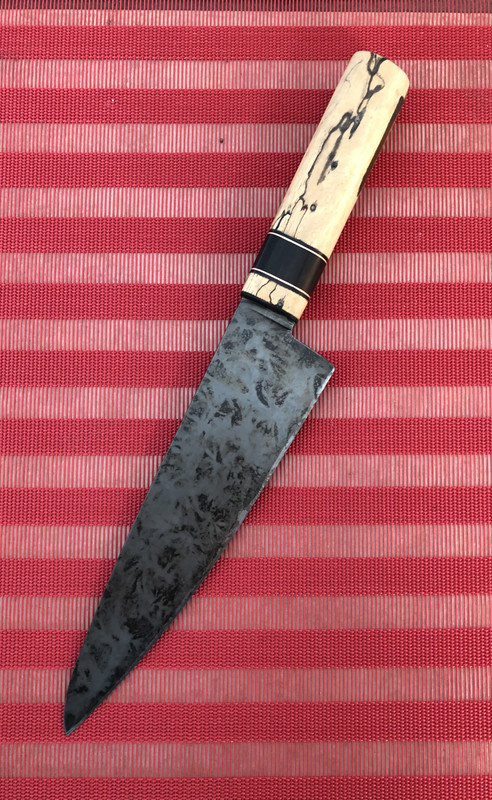Hi again,
Here is my first proper, I hope, kitchen knife. It is my interpretation of a Gyuto knife made from O1 steel.
I say proper, because I kind of made another kitchen knife, by trying to save the build, but not really by design, see this and go to the end of post
https://www.bladeforums.com/threads/help-me-with-this-knife-design-and-build-take-2.1641810/
Blade length: 7 1/4”, distally tapered
Width: 2” at the widest point
Spine: 0.11” at the widest point
It has an FC then mustard etch. It will rub off, but I just wanted some protection until the natural patina forms and the pattern looks interesting.
The spacers are made of cooper, G10 and African black wood.
Comments welcomed.

Thanks again,
Constantin
Here is my first proper, I hope, kitchen knife. It is my interpretation of a Gyuto knife made from O1 steel.
I say proper, because I kind of made another kitchen knife, by trying to save the build, but not really by design, see this and go to the end of post
https://www.bladeforums.com/threads/help-me-with-this-knife-design-and-build-take-2.1641810/
Blade length: 7 1/4”, distally tapered
Width: 2” at the widest point
Spine: 0.11” at the widest point
It has an FC then mustard etch. It will rub off, but I just wanted some protection until the natural patina forms and the pattern looks interesting.
The spacers are made of cooper, G10 and African black wood.
Comments welcomed.

Thanks again,
Constantin
Last edited:
